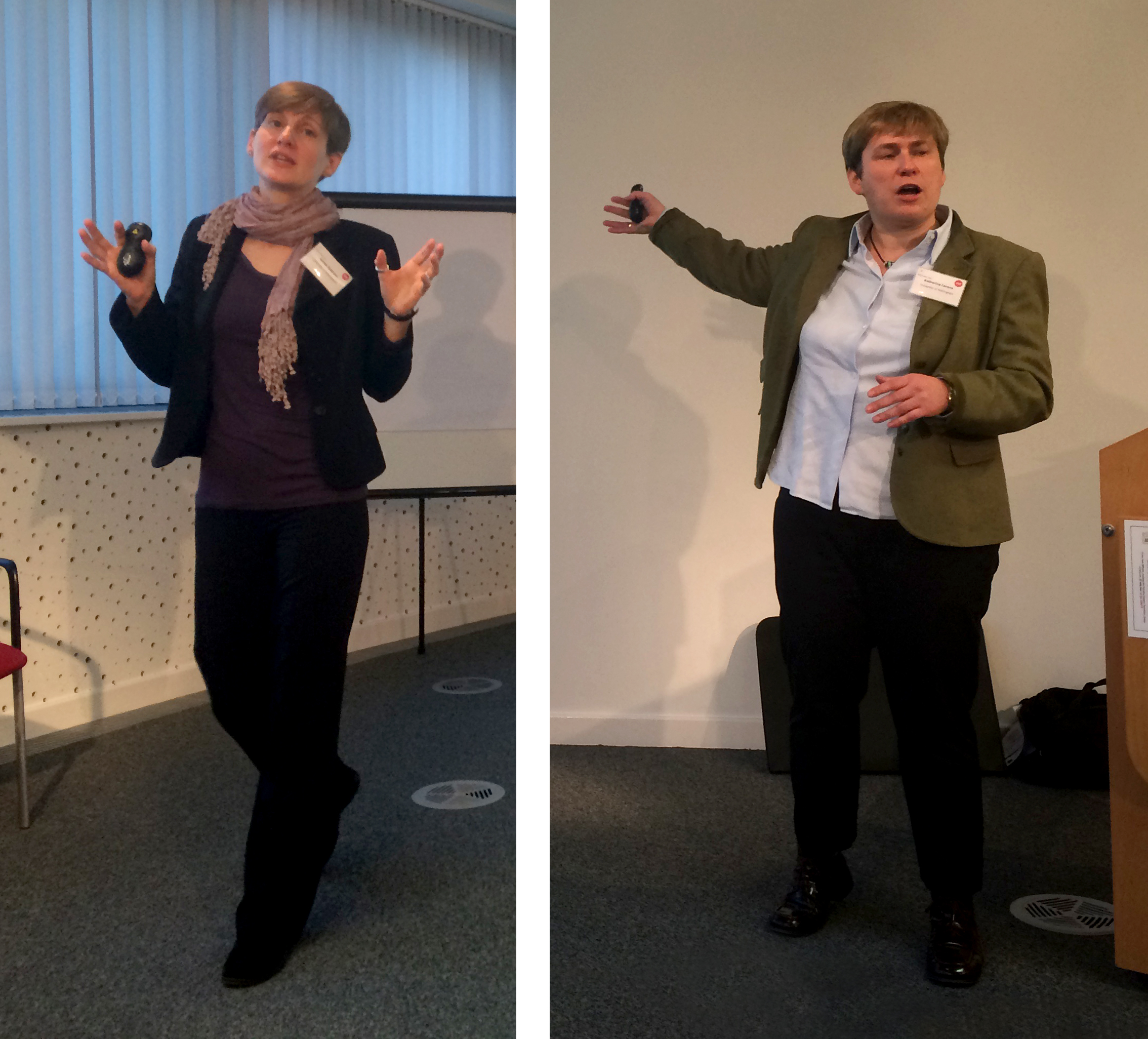
22 January, 2015, by Gemma Morgan-Jones
Business Stories to Enhance Your Brand
Ingenuity Breakfast Event – Tuesday 20th January 2015
Speakers: Esther Eidinow and Katharina Lorenz, University of Nottingham Department of Classics and John Griffiths, CONNECT Venture Enterprises Ltd
What’s your story?
A key part of any organisation’s success is having a good story, knowing that story—and sharing it effectively. Our first speakers of the morning are Esther Eidinow and Katharina Lorenz from The University of Nottingham’s Department of Classics. In this, their first keynote talk at an Ingenuity breakfast event, they bring a new and refreshing perspective to the network and indeed to the subject of storytelling.
“It’s a very natural thing to tell a story” begins Esther, acknowledging the efficiency of storytelling as a tool for communication. Telling stories may come as second nature in our daily lives, but perhaps we underestimate their power to define who we are, where we’ve come from and more importantly where we’re going.
In business, the stories we tell can have a significant impact on the way we build successful teams, attract funding and ultimately succeed or fail in attracting customers!
“In a world where people have a lot of choices, the story may be the deciding factor.”
– Nick Morgan, a communications consultant and author of How to Tell Great Business Stories
It’s all about the way you tell it
Katharina and Esther share a number of case studies showcasing examples of successful storytelling in business.
Betty’s and Taylor’s of Harrogate tells the story of two businesses who were masters in their respective fields coming together for greater glory. Told another way, this could have been a simple tale of one business taking over another, but this company has crafted a story that works to their advantage.
Innocent Drinks tells the charming story of its enthusiastic founders selling their first smoothies from a stall at a music festival in London. “Should we give up our jobs to make these smoothies?” they ask their customers, inviting them to throw their empties into bins marked ‘Yes’ or ‘No’. By bringing their audience into the story, it becomes even more engaging.

Esther Eidinow and Katharina Lorenz – The University of Nottingham
Further case studies highlight other examples of effective storytelling in business, but one thing is clear; emotional engagement is key. Emotional engagement with your staff, suppliers and customers ensures that everyone feels they have a stake in the business and a shared vision.
Storytelling protocols
There are certain ‘eternal templates’ for storytelling and archetypal characters that consistently appear. Katharina and Esther guide us through some archetypes from the ancient world: the Hero, the Trickster and the Tactician.
– The Hero is good at problem solving and takes the initiative.
– The Trickster is a skilful communicator and quick to act.
– The Tactician is resourceful and inventive.
Once identified, these characters can be deployed to great effect in stories. Katharina and Esther invite the audience to consider what character they have cast themselves as in their own story.
They close their section with an invitation to their forthcoming workshop on ‘The Business of Stories’ and invite businesses to explore the theme in greater depth at this free one-day session. For more information about this workshop, visit the Ingenuity website.
Raising money, making money
Our second speaker, John Griffiths of CONNECT Venture Enterprises Ltd, brings a different perspective on the value of a good story. As an angel investor, John understands only too well the importance of storytelling in pitching for investment.
Before constructing your story, first you must understand your customers’ wants and needs. Then, says John, you can match your story to their story.
Who is my customer?
When raising money, the customer is the funder, so understanding their wants and needs becomes the basis for your story.
– A bank wants you to repay the debt
– An equity provider wants a return on their investment
– An angel investor, like John, may even want Tax Relief on their invested money
Understand your customer, then construct your story to assure them that your management team, your route to market and your vision and strategy can meet their wants and needs. John is also quick to add that there shouldn’t be any skeletons in your closet; at the first sign of a skeleton, the deal is dead.
Where’s the exit?
“If an investor puts money into your business, remember that they will want to get it out again!”, says John. Whilst this might seem obvious, it can sometimes be overlooked in the storytelling process, so ensure you write an exit route into the story you tell.
Our next breakfast session will be on Tuesday 24th March, when Dr Gianluca Sergi will be talking about ‘Hollywood in Your Business’. For more information, visit the Ingenuity website.



[…] will recall Katharina and Esther’s immensely popular presentation last year on Business Stories To Enhance Your Brand. Back by popular demand, Katharina and Esther will be taking the floor at our breakfast event on […]